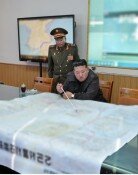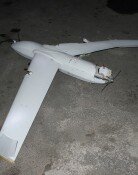Conflicts between doctors and government ongoing for eight months
Conflicts between doctors and government ongoing for eight months
Posted October. 19, 2024 07:53,
Updated October. 19, 2024 07:53
The medical community has reportedly decided not to join the committee for estimating supply and demand of medical professionals, which aims to determine the appropriate number of doctors required. The government has announced that it would launch such an estimation committee within 2024, half of whose members will be recommended experts, including doctors, nurses, oriental doctors, and pharmacists. However, the medical community refused to submit the list of recommendations until Friday, the deadline for the submission. The launch plan within 2024 looks increasingly unlikely. The establishment of the consultative body among the ruling and opposition parties, medical community and the government has been pending for over a month with signs of discord among parties and the government emerging. The conflicts between medical community and the government have been ongoing for eight months and do not seem to be ending anytime soon.
The conflicts between the medical community and the government, triggered by the increase in medical student quota, have led to significant financial losses. Major four top-tier general hospitals, including Seoul National University Medical Center, have seen an exodus of medical trainees and a drop in medical treatments and operations, resulting in a 213.5 billion won loss in just the first half of the year. These medical centers had been stably generating net profits until 2023. Ten of the national university medical centers recorded a loss of 412.7 billion won during 20224's first half, adding to the accumulated loss during COVID-19. These financial losses are a cause for concern and highlight the severity of the situation.
The national coffers are also being poured in to fill the gap in supply of medical professionals. As much as two trillion won health insurance funding has been provided to ensure medical emergency system operation and support wage payments by medical training clinics. More than 100 billion won has been allocated to the disaster management fund established by 17 regional and city governments to ensure a medical emergency system. These fundings do not have to be spent or even squandered if it were not for the confrontation between the government and medical professionals.
The prolonged conflict between the government and the medical community has severely disrupted the healthcare system and intensified the suffering of patients. Despite this, both sides have spent eight months in a repetitive and unproductive argument over "increasing medical school admissions by 2,000." The government, while pleading for the medical community’s participation in the bipartisan consultation body and the medical workforce estimation committee, has made statements such as “We need an annual increase of 4,000 doctors” and “We can train 7,500 medical students,” which only raise doubts about the sincerity of the dialogue. The medical community has been similarly ineffective, maintaining its stance of opposing next year’s increase in medical school admissions but failing to offer a clear plan for the future. Neither side seems to grasp that simply increasing the number of doctors, as the government insists, or withdrawing the increase in medical school admissions, as the medical community demands, will not automatically restore the healthcare system, which has already been severely damaged by the ongoing conflict. Meanwhile, patients are left to suffer, caught in a battle neither side seems able to win.
Headline News
- ‘Literature class with Han Kang’s writing for 10 years,’ says Oxford professor
- Gold price reaches new record high
- Moon Da-hye appears at police after drunk driving accident
- N. Korea redefines S. Korea as ‘hostile state’ in revised constitution
- Samsung develops graphic DRAM with industry-leading capacity and speed







